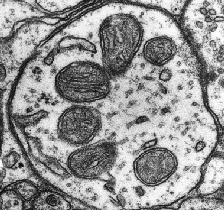
In perhaps the crowning achievement of a decade of work, a group of Harvard University researchers have identified the specific protein responsible for calcium absorption in mitochondria, solving a long-standing and crucial problem for our understanding of an essential cellular component.
Drawing on resources such as "the Human Genome Project, freely downloadable genomic databases, and a few tricks," as Vamsi Mootha, the project leader and associate professor of systems biology at Harvard Medical School, put it, the project represents a significant step forward for the field and should open the door to treatment of a number of diseases thought to be related to calcium deficiency in mitochondria. Particularly remarkable about the study is its synthesis of recently-developed cellular and genomic technologies to solve the problem.
Indeed, only with the most cutting-edge of technologies was the breakthrough even possible, as previous efforts to solve the problem using biochemistry and membrane protein purification had been met with frustration. In fact, even this breakthrough was dependent on one made less than a year ago by the same team.
Mootha's team used a new technique, which involved comparing the mitochondria of three cells (human, Trypanosome, and baker's yeast), two of which absorbed calcium (human and Trypanosome, which is a parasite), the last of which did not. By analyzing this comparison, the team was able to identify about fifty proteins which differed between the two groups. After careful study of these fifty proteins, the researchers were able to determine that the M1CU1 protein was most likely responsible for calcium uptake.
This was insufficient for charting the entire channel, however. Using M1CU1 as a starting point, the team then examined public databases of whole genome RNA and protein expression identifying a protein whose utility was unknown and whose qualities mirrored M1CU1. After testing the new protein by silencing it from an experimental group of mice and finding that their liver cells became incapable of absorbing calcium, the lab was able to conclusively identify MCU (standing for mitochondrial calcium uniporter).
The finding is undoubtedly a huge one for bio research as a whole. It will be exciting to see what the Mootha lab comes up with next!
Read the findings in their entirety in Nature here.
If you are a life science researcher looking for ways to improve your research or a biotechnology vendor looking to connect with customers, plan on attending a BioResearch Product Faire™ or Biotechnology Vendor Showcase™ hosted by Biotechnology Calendar, Inc. Click below to find a show near you!


